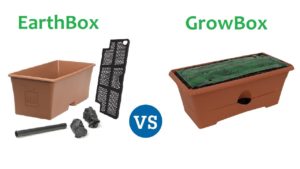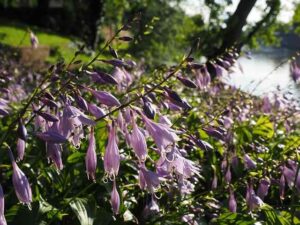This guide explores o a variety of evergreen plants that thrive in containers, offering options suitable for different aesthetics and climates. Let’s discover the enchanting world of container-friendly evergreens and how to incorporate them into your outdoor spaces!
Boxwood (Buxus)
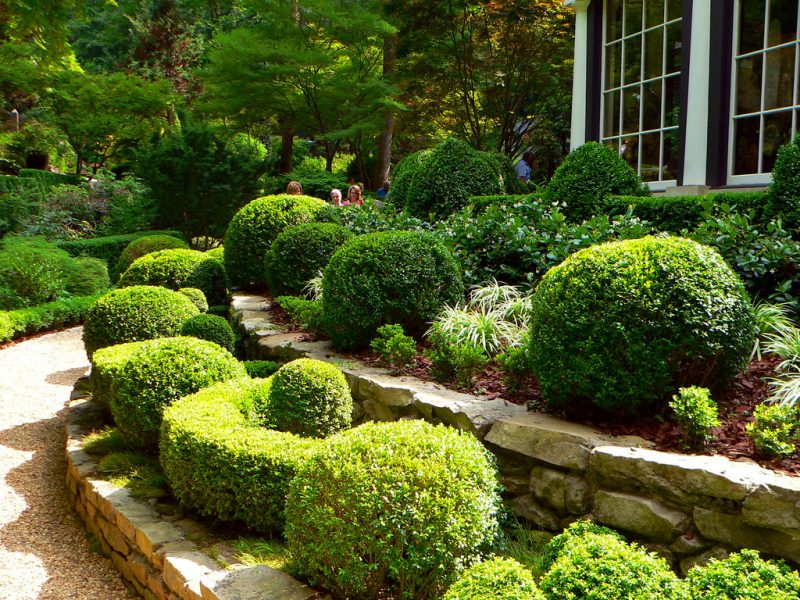
Boxwood is a beloved choice for those seeking a classic, formal appearance in their container arrangements. Known for its dense, lush foliage and adaptability, Boxwood can be pruned into various shapes, making it an excellent option for topiary or hedging in containers. The leaves are small and glossy, exuding a deep green hue that lends a sophisticated touch to your garden.
One of the advantages of Boxwood is its tolerance for a wide range of climates, though it thrives best in USDA Zones 5-9. These plants prefer well-draining soil and partial to full sun, making them adaptable to different sun exposures. Regular watering is essential, as Boxwood does not tolerate prolonged drought and may suffer if left dry for too long.
Additionally, Boxwood is a relatively low-maintenance evergreen. A simple annual pruning can maintain its shape and encourage healthy growth. Pairing Boxwood with seasonal flowering plants or unique ornamental grasses can create a striking contrast that enhances the visual appeal of your container garden.
Japanese Pieris (Pieris japonica)
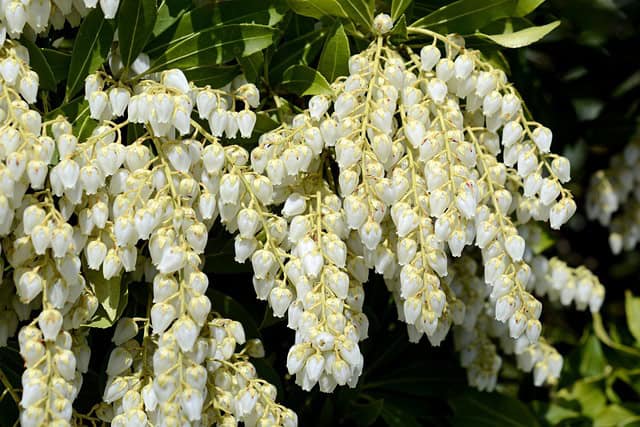
The elegant Japanese Pieris is known for its stunning floral display and vibrant foliage. With its cascading clusters of bell-shaped flowers that bloom in early spring, this evergreen is a showstopper. The foliage varies from deep green to a blush or reddish hue, depending on the variety and season.
Japanese Pieris thrives best in acidic, well-draining soil and enjoys partial shade to full sun. It’s well-suited for container gardening, as its root system remains compact, allowing it to flourish in confined spaces. This species also exhibits pest resistance, making it an attractive option for gardeners looking for hardy and resilient plants.
When cultivating Japanese Pieris in containers, remember to provide ample water and protect it from harsh winter winds. Newly planted specimens may require additional care to establish their root system, but a little patience will pay off when you see those beautiful blooms unfolding. Pair this evergreen with ferns or other shade-tolerant plants for a lush, woodland feel.
Emerald Arborvitae (Thuja occidentalis)
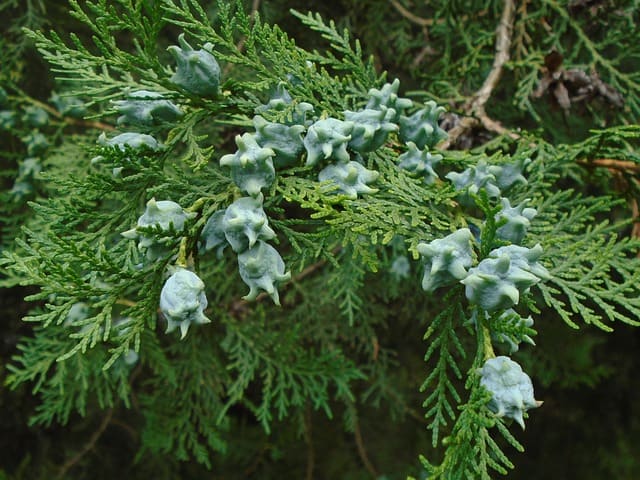
Emerald Arborvitae is a standout conifer known for its stunning upright growth and vibrant green foliage. Reaching heights of 10 to 15 feet when planted in the ground, these trees can be kept smaller and more refined when grown in containers, making them a popular choice for gardeners with limited space.
These evergreens are particularly favored for their dense, pyramidal shape, which provides excellent privacy when planted in a row. They thrive in full sun to partial shade and enjoy well-draining soil. Regular pruning encourages bushier growth and helps maintain the desired height for your container.
The emerald foliage remains vibrant throughout the year, even in winter, providing visual interest in every season. Pair this evergreen with jewel-toned flowers or colorful perennials to create a stunning contrast that brightens your outdoor space.
Coral Bells (Heuchera)
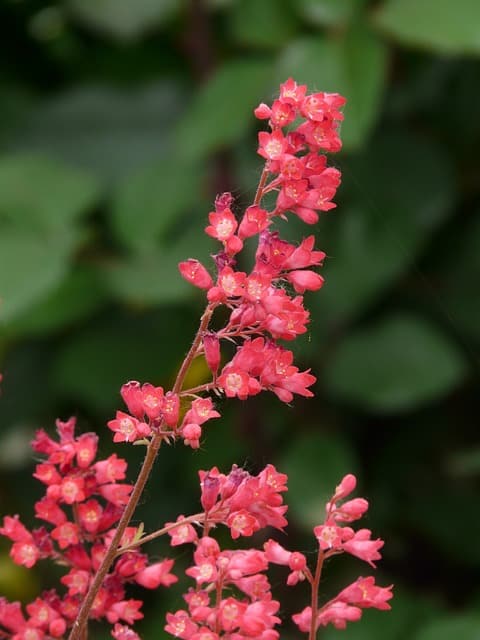
Coral Bells, also known as Heuchera, are perennials celebrated for their unique foliage and vibrant colors. These plants produce a stunning array of leaf colors, from deep purples and burgundies to bright lime greens and silvers. While not traditional evergreens, many varieties exhibit semi-evergreen characteristics, retaining some foliage throughout the winter.
Ideal for container gardening, Coral Bells thrive in partial shade and well-drained soil. They prefer cooler temperatures, making them a popular choice in many regions. The delicate flower spikes that rise above the foliage during the summer add an additional layer of interest and attract pollinators.
When selecting Coral Bells for your containers, consider mixing multiple varieties to create a colorful tapestry of leaves that can brighten your space year-round. Pair them with shade-loving annuals or ferns for a lush, textural contrast that will leave a lasting impression.
Japanese Yew (Taxus cuspidata)
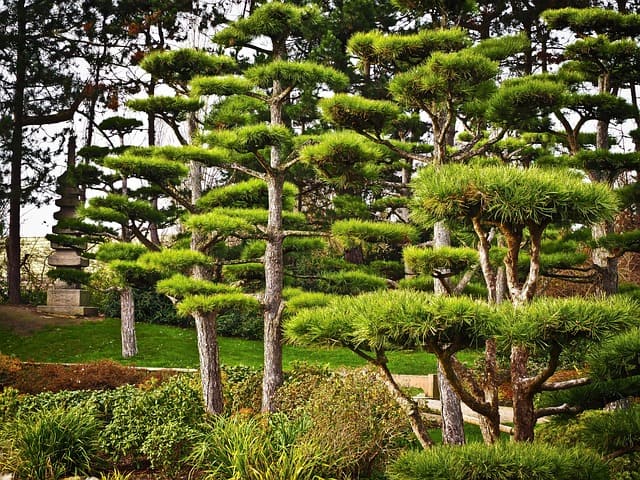
The Japanese Yew is a versatile evergreen that exhibits both beauty and adaptability, making it a prime candidate for container gardening. With its dark green, needle-like foliage and bushy growth, it can act as a stunning backdrop for seasonal colors or serve as a focal point in a minimalist design.
Japanese Yews thrive in a range of conditions, from full sun to partial shade, and are tolerant of various soil types, provided they have good drainage. Their slow growth rate makes them perfect for containers, as they won’t outgrow their pots quickly.
Care involves regular watering, especially during dry spells. The ability to shape and prune the Japanese Yew offers an opportunity to create unique forms and silhouettes, allowing you to customize your container garden according to your style. This evergreen pairs beautifully with colorful annuals, creating a charming and vibrant display.
Bay Laurel (Laurus nobilis)

Bay Laurel is not only an evergreen that offers aromatic foliage but also adds character to any container garden. Commonly known for its culinary use, the shiny, dark green leaves serve a dual purpose—bringing delicious flavor to your dishes and aesthetic beauty to your patio.
Bay Laurel thrives in well-draining soil and enjoys plenty of sunlight, making it ideal for bright locations. It can withstand some drought once established, although it’s important to ensure consistent moisture during the growing season to maintain its vibrancy.
Growing Bay Laurel in containers allows for easy harvest, as you can snip leaves as needed. Additionally, this plant can be shaped into a lovely topiary form, enhancing its ornamental value. Consider pairing Bay Laurel with herbs or other Mediterranean plants for an alluring culinary-themed container garden.
Holly (Ilex)
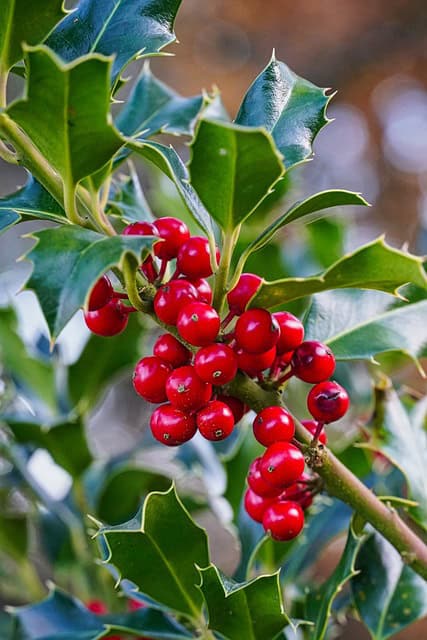
Holly is synonymous with winter festivities, but its beauty extends far beyond the holiday season. With its glossy green leaves and bold red berries, holly brings striking visual interest to your container garden all year long. Varieties such as the ‘Blue Princess’ and ‘Golden Queen’ provide a range of options with different foliage hues and berry colors.
Hollies prefer well-draining soil and thrive in full sun to partial shade, adapting well to various climatic zones. They often grow into compact shrubs, perfect for containers. Pruning is advisable to maintain a desired shape and size, and it’s crucial to plant male and female varieties together if you’re looking to enjoy those delightful berries.
To create a festive look in your container, consider placing holly among evergreen fillers like Boxwood or Juniper, mixing in seasonal flowering plants for an attractive seasonal display.
Bergenia (Bergenia crassifolia)
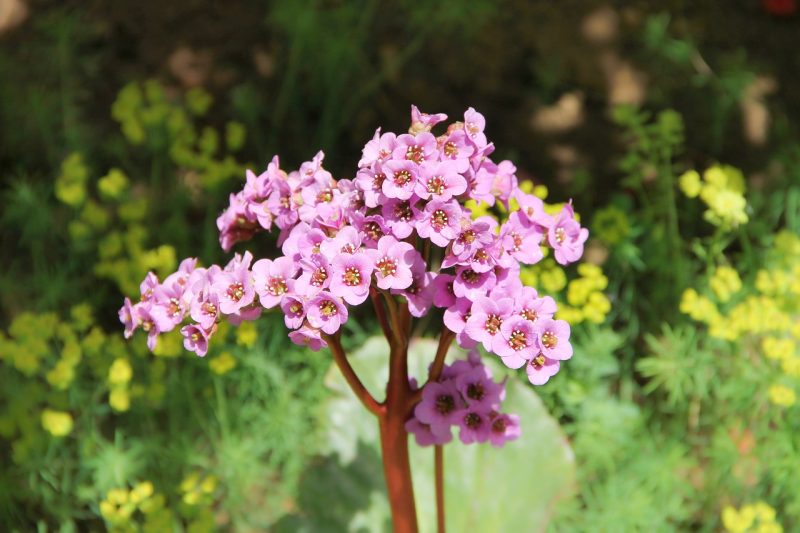
Bergenia, also known as “Elephant Ears,” is a unique evergreen that can thrive in container gardens with ease. Renowned for its large, glossy leaves, Bergenia can add visual weight and richness to any arrangement. In spring, these plants reward you with clusters of pink to white flowers that brighten your outdoor space.
Bergenia prefers well-drained soil and thrives in partial to full shade, making it suitable for containers in shadier spots. These plants are also tough; once established, they are quite drought-resistant.
Combine Bergenia with ferns or other shade-loving plants for a serene, woodland-inspired container garden. Their large leaves create an appealing contrast with more delicate foliage, enhancing the overall aesthetic of your garden.
Golden Creeping Jenny (Lysimachia nummularia)

Golden Creeping Jenny is a delightful option for container gardens, with its vibrant golden-yellow foliage. This semi-evergreen perennial is admired for its trail-building habit, perfect for spilling over the edges of containers and creating a soft, flowing effect.
Thriving in full sun to partial shade, Golden Creeping Jenny prefers well-drained soil. Its vibrant color can brighten darker areas, adding visual interest and life. These plants can tolerate a range of conditions, though consistent watering will yield the best results.
You can create stunning combinations by pairing Golden Creeping Jenny with darker evergreens like Juniper or Boxwood to emphasize the contrast. This can result in a dynamic visual effect that draws attention to your container garden.
Yucca (Yucca filamentosa)
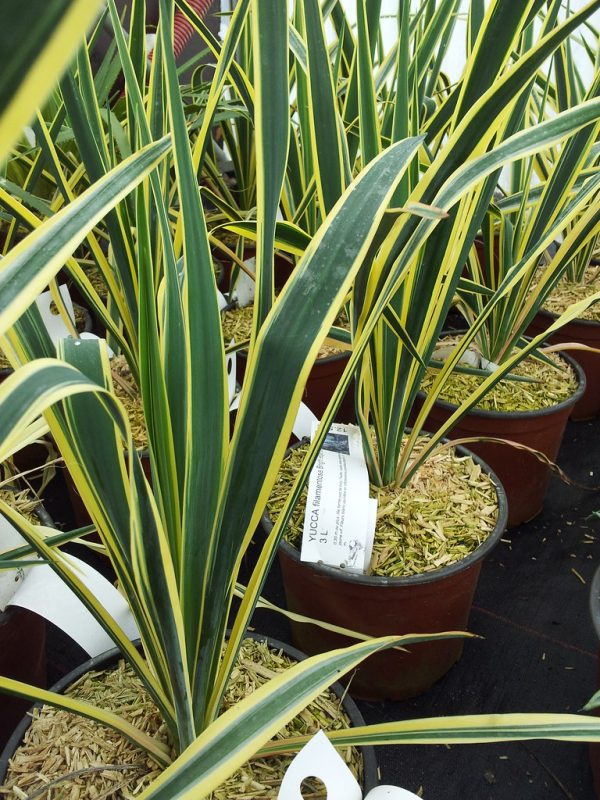
Yucca is a bold choice for container gardening, showcasing dramatic architectural foliage and striking blooms. With sword-like leaves that create a striking silhouette, Yucca plants add an element of drama and modernity to any container arrangement.
These hardy plants thrive in full sun and well-draining soil, and they are drought-tolerant once established. Their resilience makes them perfect for busy gardeners or those with limited time to tend to their containers.
In late summer, Yucca produces tall flower spikes adorned with white blooms, adding a stunning focal point. Consider mixing Yucca with tropical plants for a striking contrast or with other drought-tolerant species to maintain a cohesive aesthetic.
Privet (Ligustrum)
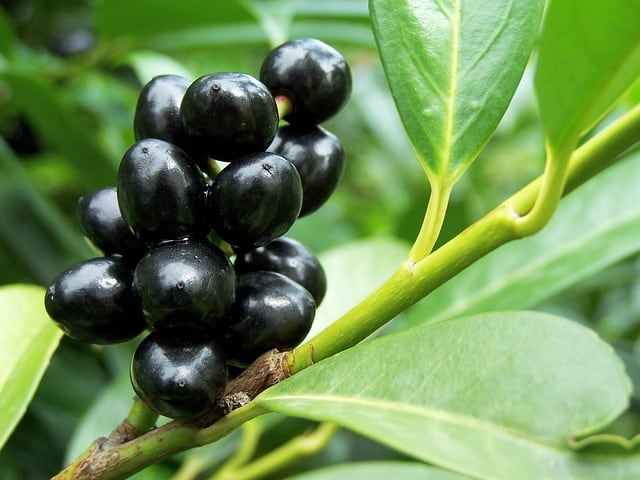
Privet is a versatile evergreen shrub that serves beautifully in container gardens, promoting privacy and structure. With its dense foliage, privet can be shaped and pruned into various forms, making it a go-to choice for topiary enthusiasts and garden designers.
This plant thrives in a wide range of conditions and adapts to various soil types, although it prefers well-draining soil. Full sun to partial shade is best, and regular watering is essential to prevent stress during dry spells.
The rapid growth rate of privet allows for quick results, making it an excellent choice for achieving a lush look in a short time. Combine privet with colorful annuals or flowering perennials to add vibrancy and warmth to your container arrangement.
Italian Cypress (Cupressus sempervirens)
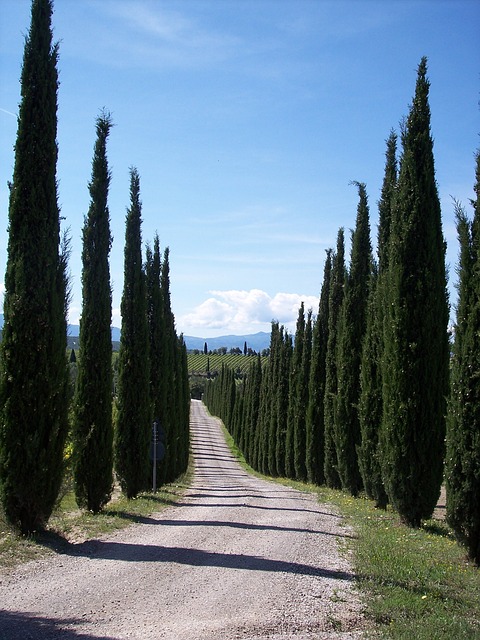
Italian Cypress is emblematic of Mediterranean gardens and brings an elegant vertical accent to your container arrangements. With its slender, columnar form and dark green foliage, this evergreen exudes a regal quality that can stand out in any outdoor landscape.
These trees prefer full sun and well-draining soil, thriving in USDA Zones 7-10. Their unique silhouette adds height and structure to your container garden, making it an ideal focal point at the back of a larger arrangement.
Regular watering helps establish the plants when newly potted, while older specimens are relatively drought-tolerant. For an alluring Mediterranean feel, pair Italian Cypress with terracotta pots and colorful flowering plants.
Mountain Laurel (Kalmia latifolia)

Mountain Laurel is a stunning evergreen shrub with beautiful blossoms that emerge in late spring. Known for its unique flower clusters, this plant has a reputation for being a hardy, disease-resistant option suitable for various landscape designs.
Mountain Laurel thrives in well-draining, acidic soil and prefers partial shade to full sun conditions. Its thick, dark green foliage retains its beauty throughout the year, and it can grow well in containers, allowing for easy placement in whatever area of your outdoor space requires a pop of green.
To maximize the stunning blooms, ensure your mountain laurel receives protection from harsh winter winds. Pair it with shade-loving perennials or other evergreens to create a lush, layered display in your container arrangements.
Rhododendron (Rhododendron ferrugineum)

Rhododendrons convey a sense of grandeur with their impressive blooms and lush foliage. Perfect for container gardening, these trees are admired for their clusters of flowers in vibrant hues, ranging from pink to purple and white.
Rhododendrons thrive in acidic, well-draining soil and appreciate partial shade, especially in hotter climates. They can develop well in containers, though they require adequate watering during the growing season to ensure they don’t dry out.
When selecting a rhododendron for your container, consider your climate and the variety’s blooming season. Pairing rhododendrons with ferns or low-growing companion plants creates a stunning, layered effect, showcasing the beauty of every bloom.
Conclusion
Creating a mesmerizing container garden filled with evergreens can provide year-round interest, lush greenery, and gorgeous designs that adapt to changing seasons. Each evergreen discussed in this guide brings its unique beauty and character, allowing for endless combinations and arrangements to fit your taste and outdoor space.



